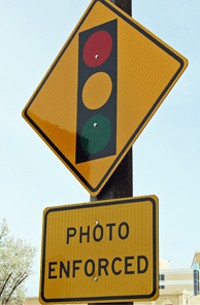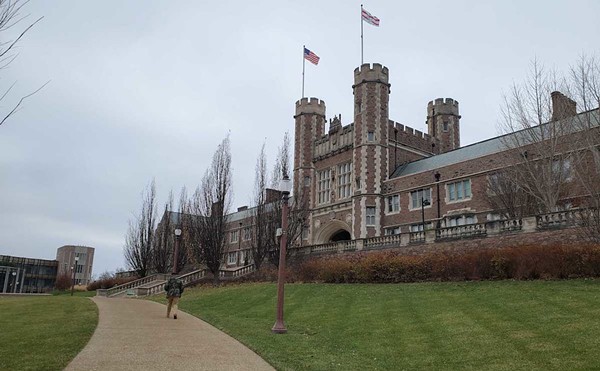Here's one for all you red-light camera haters: A study released yesterday by the Insurance Institute for Highway Safety (IIHS) suggests that cameras saved 159 lives in the fourteen biggest U.S. cities that used the technology from 2004 through 2008.
Had cameras been in use in all the nation's largest cities, some 815 deaths could have been prevented, according to the study that was highly favorable of red-light cameras. The IIHS analysis is sure to add to the debate over the controversial cameras that many see as little more than a revenue generator for the municipalities that use the devices.
And while the study suggests that cities with red-light cameras saw fatal accidents decline by 35 percent when compared to accident statistics in the 1990s, cities without red-light cameras also saw a decline in fatal accidents of 14 percent using the same comparisons. The authors of the study then took that difference (21 percent) and added a few intangibles to suggest that red-light cameras actually reduce fatal accidents by 24 percent.
The IIHS study did acknowledge earlier research that's shown red-light cameras can increase rear-end collisions as people stomp on the brakes to avoid a ticket. However, those crashes pale in comparison to the deadlier side-impact (a.k.a. "T-bone) collisions that have been shown to decline by as much as 32 percent at intersections with red-light cameras.
The study further argues that the concerns of those injured in intersection collisions are often overshadowed by the angry voices of those opposed to the cameras for financial or privacy concerns. The study found that nearly two-thirds of those injured at intersections were not the people who ran the red light, but instead other motorists and/or pedestrians hit by the scofflaw vehicle.
The study did not look at data from St. Louis.
The Insurance Institute for Highway Safety tells me that they funded the study with no financial backing from red-light camera operators. The IIHS, according to a spokesman, is funded wholly by automobile insurance companies tasked with researching ways to reduce crashes.
What would be really interesting now is for a study to look at the IIHS numbers and determine how much the red-light cameras have taken in to prevent the loss of life. For example, if the cameras really did save 159 lives in the 14 largest cities that used the cameras from 2004-08, how much did those same cameras take in in revenue during that time period? In short what's the price tag on how much these cameras cost per saved live?
I know. You're always going to get some grand-standing politician to say: "Even if they save just one life, they're worth the cost regardless."
New Study Suggests Red-Light Cameras Significantly Reduce Fatal Accidents
[
{
"name": "GPT - Leaderboard - Inline - Content",
"component": "41932919",
"insertPoint": "5th",
"startingPoint": "3",
"requiredCountToDisplay": "3",
"maxInsertions": 100
}
]






